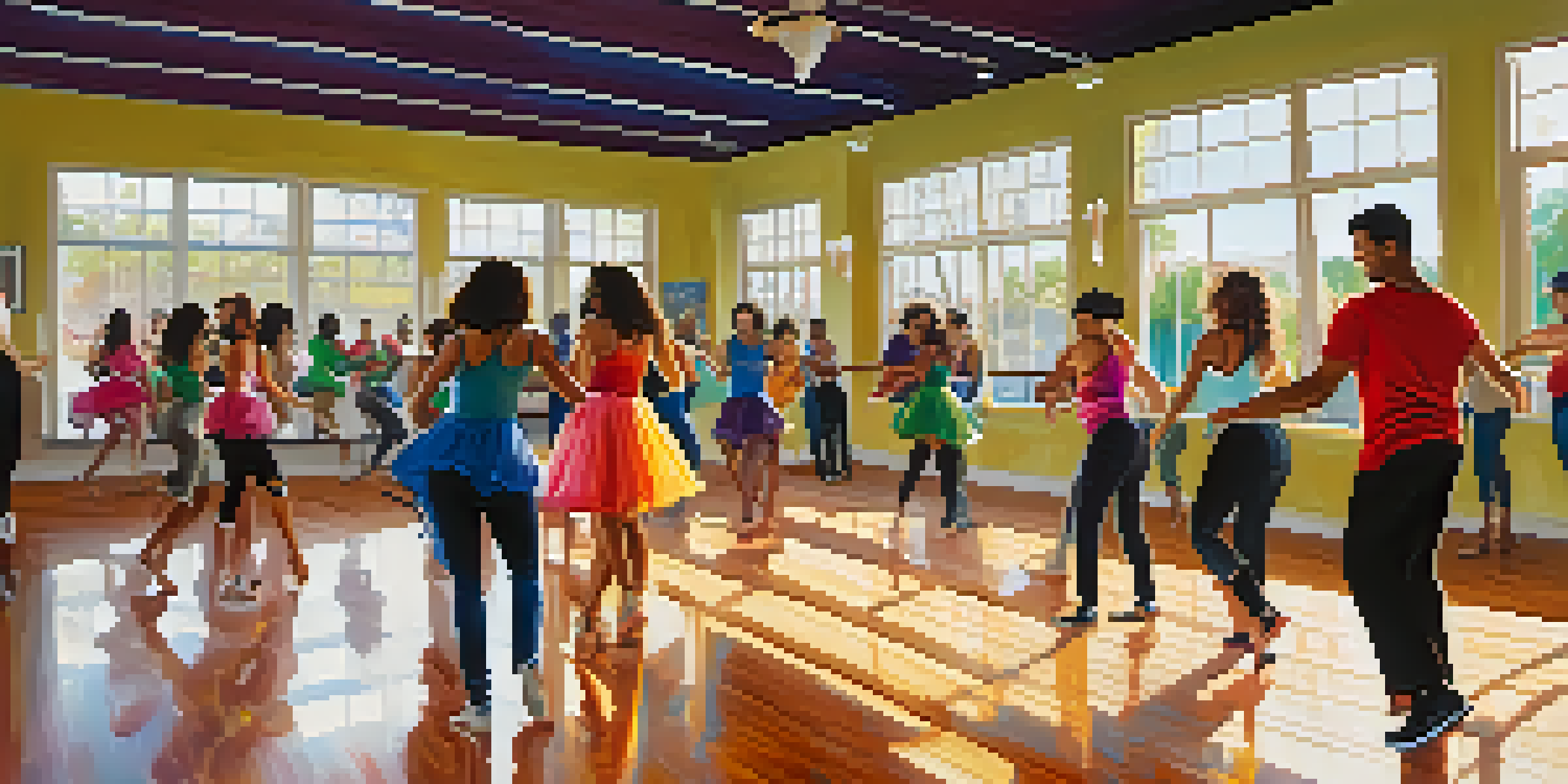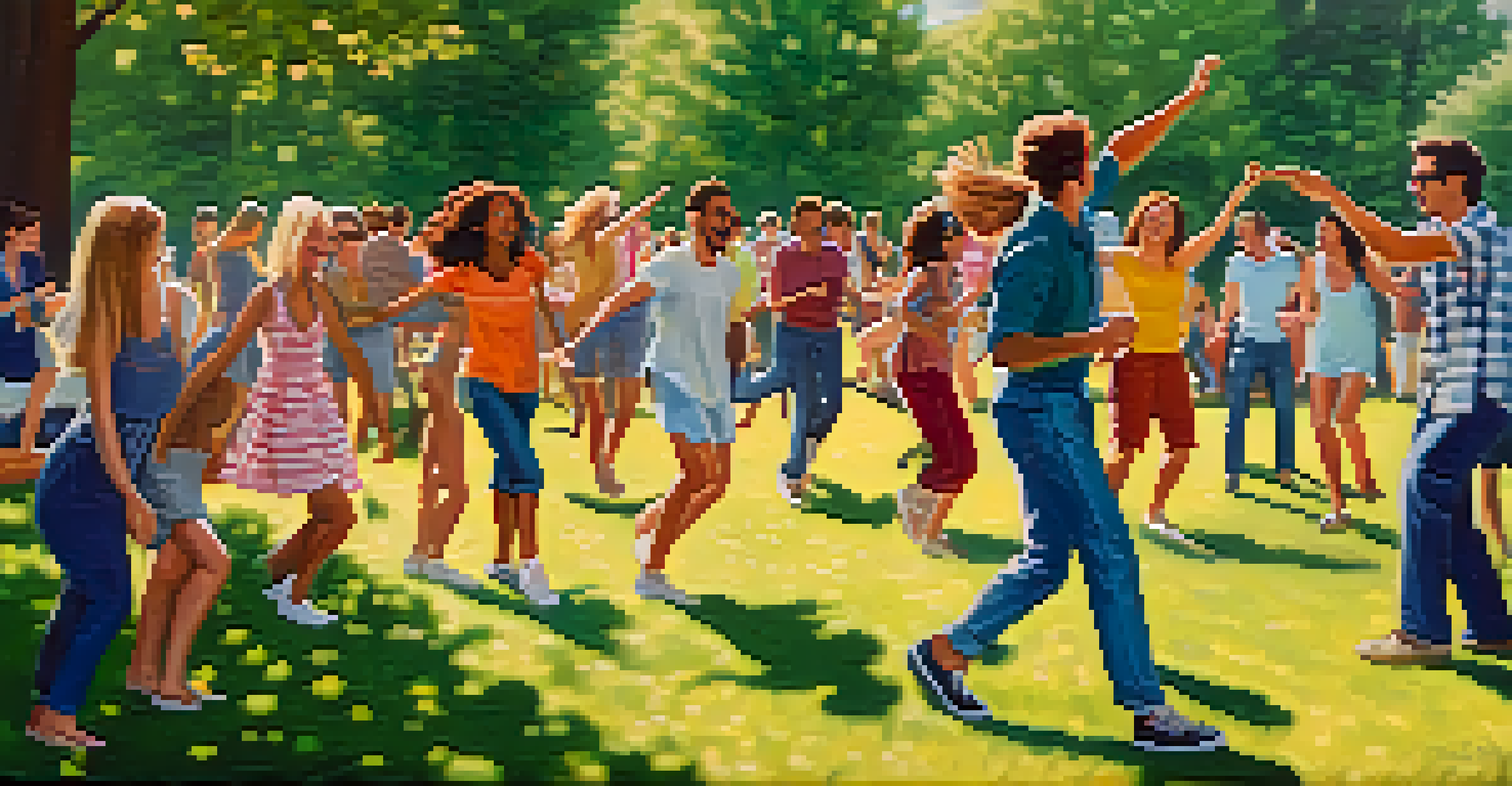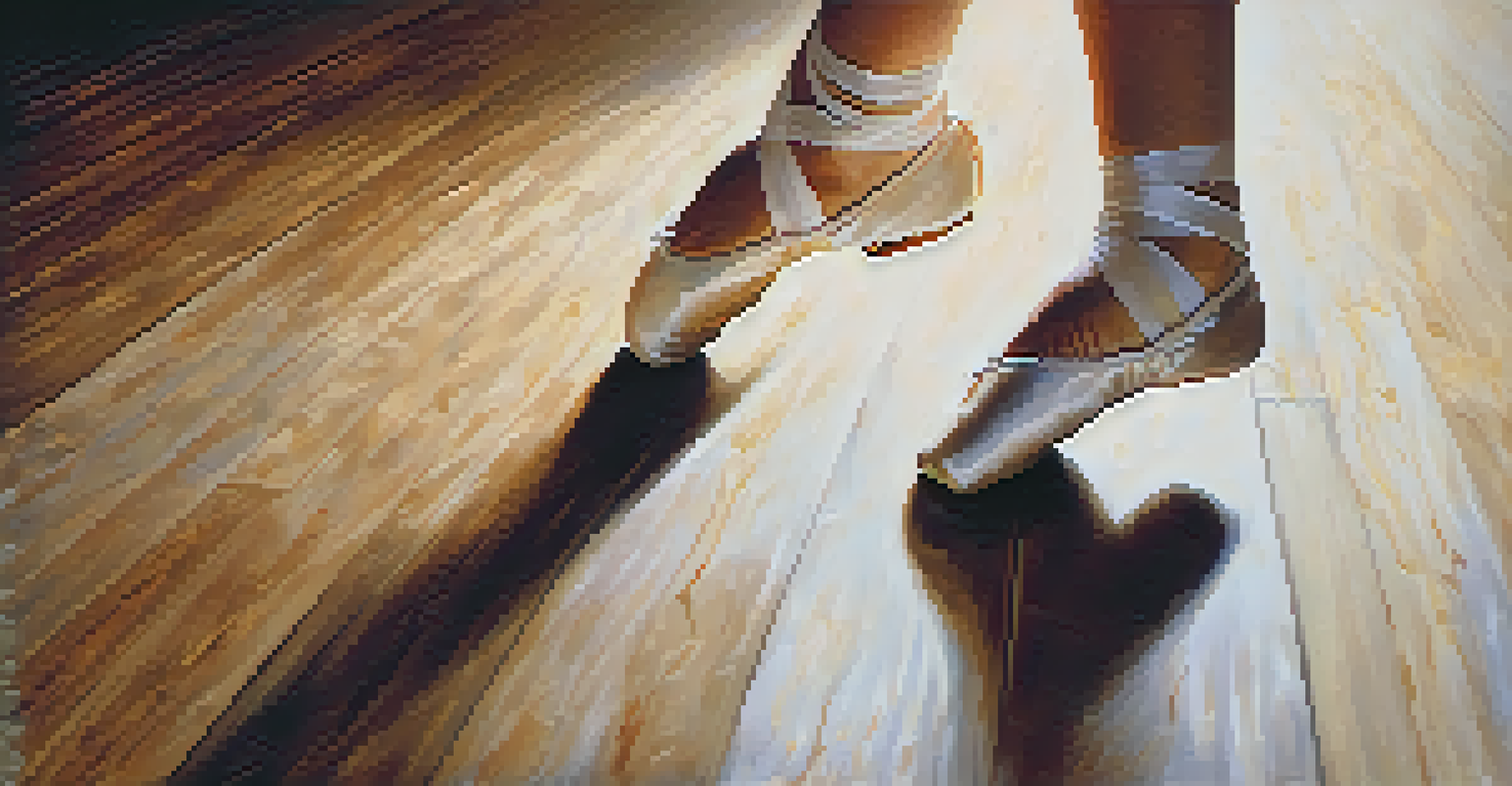The Impact of Dance on Brain Connectivity and Functionality

Understanding Brain Connectivity and Functionality
Brain connectivity refers to how different regions of the brain communicate with each other. This interaction is crucial for effective functioning, as it allows for the coordination of thoughts, emotions, and actions. In simple terms, think of it like a network of roads connecting various towns; the better the roads, the smoother the travel between destinations.
Dance is the hidden language of the soul.
Functionality, on the other hand, relates to how well these connections perform tasks. When brain regions work together efficiently, we experience improved memory, learning, and overall cognitive abilities. Imagine your brain as a well-oiled machine; when all parts are working in harmony, everything runs smoothly.
Research shows that activities like dance can significantly enhance both connectivity and functionality. By engaging in dance, individuals stimulate various brain areas, leading to a more interconnected and efficient brain network.
The Science Behind Dance and Brain Activity
When you dance, several brain regions are activated, including those responsible for movement, emotion, and cognition. Studies using brain imaging techniques have shown increased activity in areas such as the basal ganglia and cerebellum during dance. This multi-faceted engagement is akin to playing a musical instrument, where multiple skills and senses come into play simultaneously.

Moreover, dance requires coordination, rhythm, and memorization of steps, which further stimulates the brain. This complex interplay of physical and cognitive demands can create new neural pathways, enhancing both connectivity and functionality. Think of it as a workout for the brain, where the more you practice, the stronger your mental muscles become.
Dance Enhances Brain Connectivity
Engaging in dance activates multiple brain regions, improving communication and coordination between them.
Additionally, social dance forms add another layer by incorporating interpersonal connections. Engaging with others in a dance setting fosters emotional and social intelligence, contributing to overall brain health and connectivity.
Dance as a Form of Cognitive Training
Cognitive training is designed to improve mental functions such as memory, attention, and problem-solving skills. Dance serves as a fun and dynamic form of cognitive training, challenging the brain in unique ways. For instance, learning new dance routines requires focus, pattern recognition, and quick thinking, which are all essential cognitive skills.
To watch us dance is to hear our hearts speak.
Moreover, dance can also delay cognitive decline in older adults. Studies suggest that regular participation in dance can help maintain and even enhance brain functions as we age. It’s like giving your brain a gym membership—keeping it fit and agile over the years.
In essence, dance not only entertains but also serves as an effective tool for enhancing cognitive abilities, making it a valuable addition to traditional cognitive training methods.
Emotional Benefits of Dance on Brain Function
Beyond physical and cognitive benefits, dance has profound emotional impacts that also influence brain functionality. When we dance, our brains release endorphins, the 'feel-good' hormones that boost mood and reduce stress. This emotional uplift can lead to improved mental clarity and focus, much like a breath of fresh air clears away the fog.
Furthermore, dance allows for self-expression, helping individuals process emotions in a healthy way. This emotional release can enhance mental well-being, contributing to better brain function overall. Picture dance as a language that transcends words, enabling deeper connections with ourselves and others.
Cognitive Training Through Dance
Dance serves as a dynamic form of cognitive training, enhancing mental functions like memory and attention.
Incorporating dance into one's routine can therefore be a potent form of emotional therapy, promoting resilience and cognitive flexibility, which are vital for optimal brain health.
Dance and Neuroplasticity: A Dynamic Duo
Neuroplasticity is the brain's ability to reorganize itself by forming new neural connections throughout life. Dance is a powerful catalyst for neuroplasticity, as it challenges our brains in novel ways. By learning new movements and routines, we encourage the brain to adapt, much like a tree growing new branches to reach sunlight.
This adaptability is crucial for learning and memory, providing benefits that extend beyond the dance floor. Engaging in dance continually stimulates the brain, helping to strengthen existing connections while forging new ones. It’s like upgrading your brain’s operating system, allowing for faster processing and improved performance.
Ultimately, the interplay between dance and neuroplasticity highlights the potential for physical activity to shape the brain throughout our lives.
The Role of Rhythm and Music in Dance's Impact
Rhythm and music play a significant role in how dance affects the brain. The auditory stimulation from music can enhance brain connectivity by activating areas associated with rhythm, timing, and coordination. When you dance to music, it’s not just your body moving; your brain is also engaged in a symphony of activity.
Research indicates that music can improve cognitive functions, making it a valuable companion to dance. The combination of movement and music creates a rich sensory experience that enhances memory and learning. Think of it as a duet where each element elevates the other, leading to a more profound impact on the brain.
Emotional Benefits of Dancing
Dancing releases endorphins, boosting mood and reducing stress, which positively impacts overall brain function.
Thus, incorporating music into dance not only enriches the experience but also amplifies its benefits for brain connectivity and functionality.
Practical Ways to Incorporate Dance into Your Life
Incorporating dance into your daily routine doesn’t have to be a chore; it can be a fun and enjoyable experience! Start by exploring various styles, whether it’s salsa, hip-hop, or ballet, to find what resonates with you. Even a simple dance party in your living room can get those neurons firing and boost your mood.
Consider joining a dance class or community group to engage with others, enhancing both your social and emotional well-being. Group dances often create a sense of belonging, which can further stimulate brain connectivity. It’s like finding your tribe while having a blast on the dance floor.

Remember, the goal is to have fun and stay active. Whether it’s a structured class or a spontaneous dance-off in your kitchen, every little bit contributes to your brain’s health and functionality.